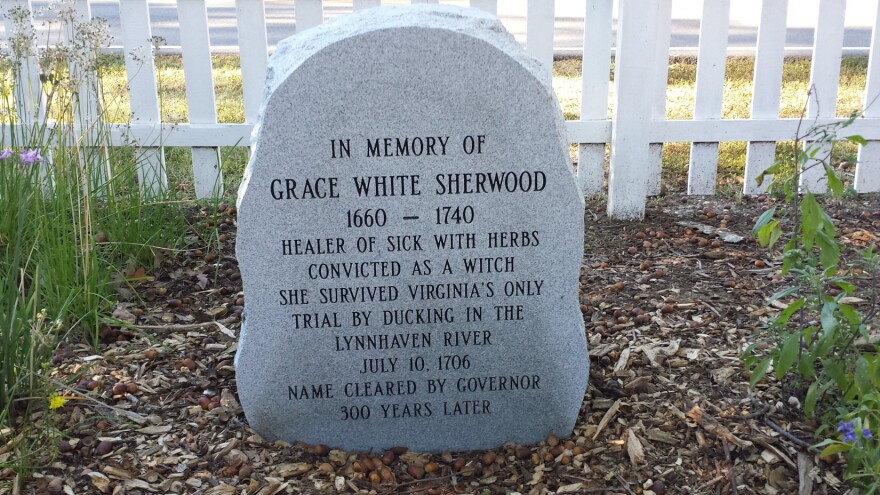On Sept. 11, 1626, “Goody” Joan Wright was put on trial in Jamestown.
The charge: Witchcraft.
It was the earliest witch trial in colonial America — 66 years before the famed trials in Salem.
Wright was a midwife living in the Kecoughtan Parish of what was then Elizabeth City County — now the city of Hampton.
A local family had refused her midwife services because she was left-handed, which was historically believed to be associated with evil. This angered Wright, neighbors said.
Soon afterward, the new mother fell ill with a breast infection and the newborn also became sick. Wright, they claimed, was to blame. She must be a witch.
The real reason she became a target: “she didn’t suffer fools,” said D’Anne Graham, a Richmond-based historian studying the history of midwifery in Virginia.
Midwives have long been subjects of ire and suspicion in Virginia, Graham said, and Wright is one of the earliest examples of their scrutiny. She was ultimately acquitted. The practice was criminalized in the commonwealth until 2005.
Another historic case might sound familiar: Grace Sherwood, the so-called “Witch of Pungo.”
Sherwood was born in 1660 and lived on a farm. As WHRO News has reported, she “was said to be very beautiful, strong-willed, and a non-conformist for the times — the perfect storm to stir up rumors of witchcraft.”
She was also a midwife and healer, historians believe. Back then, Graham said, it was all wrapped together.
“Everything medicine was domestic at that time,” she said. “You took care of everything in-house.”
Sherwood was charged with witchcraft in 1706 after a series of odd events in then-Princess Anne County, including storms and crop deaths. She was dropped into the Lynnhaven River with a 13-pound Bible to weigh her down — and she floated, denoting guilt. Sherwood was jailed for nearly eight years but then lived inauspiciously until the age of 80.
So what is the connection between midwifery and witchcraft?
“They tended to be very outspoken women,” Graham said. “Calling someone a witch was just a way to get mad at them.”
Traditionally, midwives weren’t just health professionals for childbirth, Graham said. They were part of the fabric of their community and knew the stories of the women they cared for.
Graham’s own relationship with midwifery started after having home births with her fourth and fifth children.
“At that time, home-birth midwives were illegal and working underground in Virginia,” she said. Hers were “paradigm shifting for me.”

She became a grassroots activist working to decriminalize midwifery, later earning a degree at Virginia Commonwealth University and winning a fellowship to dig deeper on the topic.
Graham’s research will go into her forthcoming book, "A Parcel of Murdering Bitches: Childbirth and Women's Autonomy from the Original Colony to the #MeToo Movement." The title comes from a phrase used in the court record to describe an all-female household in a 1706 case in Lancaster County.
In colonial America, midwives acted as “instruments of the state during a period of tight control over sexuality,” Graham wrote earlier this year. They often turned in unwed couples or extracted the names of fathers from laboring women, for example.
After the Civil War, however, they started to practice with relative freedom. While society focused on rebuilding during Reconstruction, both Black and white midwives were common and accepted.
The tide changed in the early 20th century — what Graham considers a new round of witch hunting. The rise of the formalized medical profession and field of obstetrics — dominated by white men — pushed out midwives who were no longer considered to have enough expertise.
In 1976, Virginia criminalized midwifery, except by nurse-midwives, until 2005.
Graham's research aims to shed light on how Virginia’s history with midwifery represents control over women’s bodies.
“When midwives are harassed, then women are harassed,” she said. “And it eliminates their body autonomy and their choices,” she said.



